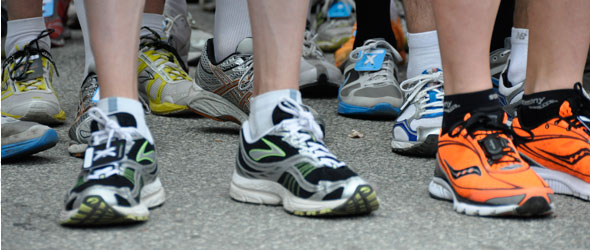 This is article one of a technical discussion relating to Pronation and the mechanisms of running injuries – Dr Regan Arendse MBChB, MSc Sports Medicine cum laude.
This is article one of a technical discussion relating to Pronation and the mechanisms of running injuries – Dr Regan Arendse MBChB, MSc Sports Medicine cum laude.
It is estimated that about 50% of all runners will experience an injury that will necessitate a break in their running programme for at least one week. Most running injuries are limited to the lower limb with injuries to the knee being the most common at 25%.
The incidence of injuries reported at other anatomical sites includes: foot (2-22%), ankle (9-20%), lower leg (2-30%), hip (2-11%) and lower back (3-11%). Running injuries have been statistically associated with previous injuries and training errors in a review by van Mechelen 1992, of the factors commonly implicated in the aetiology of running injuries. Anecdotally excessive pronation has been associated with running injuries by sports physicians.
However, there has been a lack of consensus in the literature as to a causative association between excessive pronation and running injuries. Furthermore biomechanists have been unable to demonstrate changes in the running style of runners with sports shoes that vary in the grade of motion control. This has shed doubt on the role of sports shoes in the correction of excessive pronation
Consequently, the future of the motion control features of sports shoes may be limited. However, the natural selection and continued use of sports shoes that have strong motion control features and neutral features by runners that appear to have excessive pronation movement and have a neutral movement respectively, suggest that the current design of sports shoes may not be without merit. It may be in runners best interests to continue to use the current sports shoe designs until they have been scientifically proven to have a negative effect on running biomechanics and the incidence of running injuries. In this article I will review the dynamics that occur during the gait cycle, the current understanding of excessive pronation and the possible mechanisms by which pronation is thought to cause running injuries.
Gait cycle
A gait cycle may be described as the events that occur from the initial contact of one foot to the next successive contact of the same foot with the running surface. The gait cycle in running may be described to have four distinct phases. In the first phase, the first foot is in contact with the running surface and this is described as the stance phase. During this phase the opposite foot is not in contact with the running surface and is swinging forward. The entire body is propelled forward through the air as a result of the terminal events of this phase. With the termination of the stance phase, the swing phase is described to occur. In the swing phase both feet are lifted from the ground as the body continues to follow the path of propulsion initiated during the preceding stance phase. The swing phase concludes with the first contact of the opposite limb with the running surface and the initiation of the second stance phase. The stance phase of the opposite limb is then followed by a second successive swing phase in which the body is then airborne with neither foot in contact with the running surface. The successive oscillation of the stance and swing phases of the two limbs effects forward motion during running.
see the next article – Pronation and the mechanisms of running injuries – Article 2 – Stance Phase Dynamics and Pronation

Leave a Reply